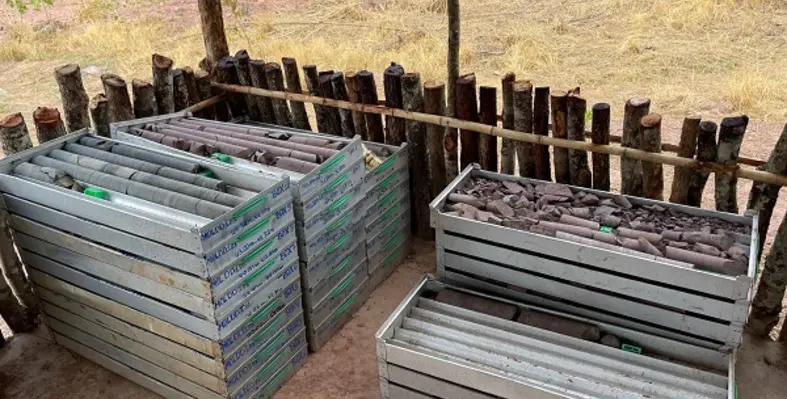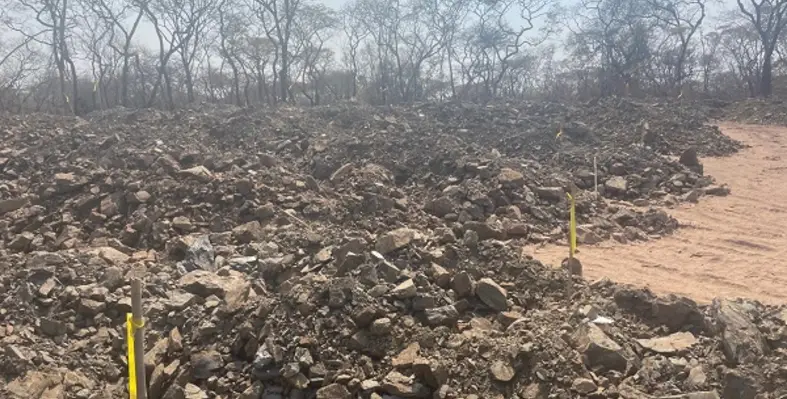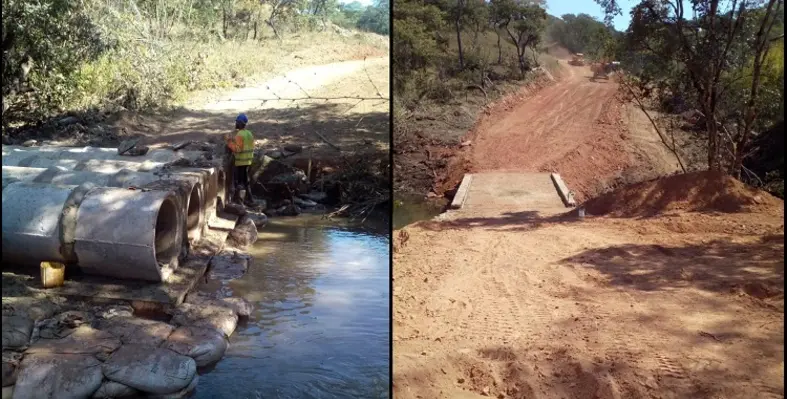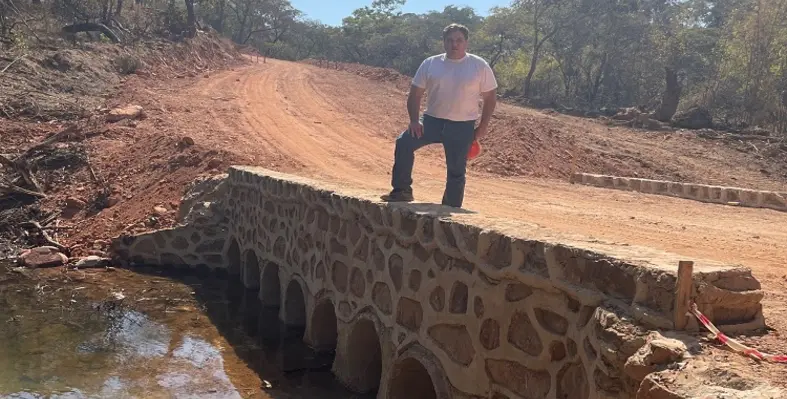Russell Fryer, CEO of Critical Metals, provides an update on his company’s activities in DRC and how the market is shaping up for 2024
At the start of 2023, murmurs of a new, aggressive breed of mining company targeting overlooked and under-analysed opportunities in the strategic mining sector in Africa were heard among the community. Following these stirrings, African Review sought out the new entity, Critical Metals, and sat down with its CEO, Russell Fryer, in order to understand more about the philosophy his company was embodying and why it was turning so many heads in the industry.
At the time, Fryer explained that the strategy for his company emerged from the view that there was a significant opportunity in the high-value critical metals space that was, for the most part, under-appreciated in the Western world. While this is now being recognised largely in light of the demands posed by the ongoing energy transition, Fryer identified that it is a market largely dominated by the processing capacity of China and that demand is expected to sharply rise as supply chain constraints are accentuated. Given these clear signs pointing towards demand and scarcity, Critical Metals began moving to identify brownfield mining opportunities across Africa and the Americas, develop them while the environment remains in its current state, process locally, and feed product into western markets where demand and prices will be rising.
This has led Critical Metals, according to Fryer, to become the first western company on the London Stock Exchange since Glencore to start production in DRC through its Molulu project, located 100 km from Lubumbashi. Acquired in September 2022 with production beginning at the start of 2023, there has been significant progress on and around the site since the last interview most notably with some excellent results emerging from its most recent drilling programmes.
Fryer commented, “Since May we had two drilling companies on the property. One working on the oxide area and one on the sulphide area. It was the second drilling company that had the most success locating high-grade copper ore. The phase one drill programme is nearing completion and then we will take the data, and develop a block model and a mine plan so when we restart mining shortly, we’ll know exactly the strip ratios and will be more informed on where we want to begin our mining.”

Another notable achievement has been reaching an agreement to initially rent and potentially acquire the Kastro processing plant assets, located just 98 km from Molulu. Critical Metals will operate the plant and use it to process ore from Molulu, allowing it to increase its margins on ore and giving the company a product with a wider global market.
“We have always believed that we need to be a fully integrated mining company and so have constantly been looking for opportunities to acquire a downstream cobalt hydroxide and copper cathode processing plant. The beauty of this is that with some rudimentary capex, it can be restarted in about 45-60 days and there is even a suggestion we could move the plant to Molulu,” remarked Fryer.
This acquisition is very much in keeping with the company’s aggressive growth strategy of acquiring high-quality assets that can optimise and add value to the company’s portfolio. “We find that with many mining companies, it takes time to get things moving,” Fryer said. “They want to explore for years, then make some type of decision on a PEA, then a pre-feasibility study, then a feasibility one, then a bankable study. This process can take years or even a decade.
“But, in the current environment, we don’t want to take five years as we know we have something potentially very big, with at least a 10-20 year life of mine. So we will rent this plant as announced, hopefully, buy it in six months, and simultaneously put together bankable feasibility studies on bringing it or building a plant at Molulu.
“As per our philosophy, we are bullish about the market. Although cobalt is sitting at around US$34,000 per ton currently, I think in the next 12-18 months this will rise and we will start to be proven right in our positive outlook on cobalt. In the meantime, we want to prepare for the potential higher prices by making sure we have cobalt ore and a plant that can actually make cobalt hydroxide. Already, we have been approached to supply cobalt hydroxide to North America, for example, and all this is why we have been so aggressive in our strategy for DRC.”

On the wider industry, Fryer added, “It is a bit of a fad at the moment for companies to throw around the word ‘critical’ or ‘strategic’ into their title or mission statements, with a lot of metals being airbrushed as such. What is clear to us is that without cobalt, you’re not going to have any aerospace or nuclear power plants; without copper you won’t be able to get electrons to move from point A to point B; without tantalum, you won’t have semi-conductors, telecommunications and satellites etc. These are critical for running economies and why they are labelled this way.
“So while there is a lot of noise around these terms, we are just putting our heads down and making these unassuming wins with metals that are critical. 14 months from now I think the market will wake up to our story and see what we are doing and what we have actually delivered.”
Walk before you run
If Fryer and his company are correct about the critical market development, it will spell a promising future for African countries blessed with such metals (and there are many) should they sufficiently grasp the opportunity. However, in the mind of Fryer, governments must be realistic about where they should target the market.
“I have spoken to many government officials and is clear that most countries are recognising the opportunity and want to fully realise this by taking actions like developing battery manufacturing plants. Ideally, this would be great, but I do not think it is economical at the current time for several reasons. Most obviously, many lack the infrastructure to achieve this; you need a steady state, a 24/7 power supply or you cannot run an effective factory. Also, many of the downstream OEMs (the likes of Mercedes or Volkswagens of the world) increasingly want such facilities closer to their manufacturing plants. Unfortunately, these are not found inland in Africa.
“However, that being said, gone are the days of digging up lithium or copper and shipping it to Asia for processing. Now, countries are pursuing in-country beneficiation, setting up realistic processing facilities, and I am all for it. I think Africa is phenomenally suited for an explosion of investments around this, thereby exposing knowledge expansion. In the critical market, the next 20-30 years are all about Africa in my mind and downstream beneficiation, extracting, being efficient and supplying the rest of the world, this is where the opportunity lies.”
Returning to his own company’s work here, Fryer described how the work at Molulu reflects this concept with the development of the local community around the mine.
“We have gone from two employees in November 2022 to more than fifty now and only two of them are expats. We built a school for the area, helped the villagers with brick production and laying and established vegetable gardens to be tended by the locals. The chiefs in the region are happy because of the creation of these microcosm economic zones and local infrastructure has been improved to accommodate access to the mine (this includes road rehabilitation and a new bridge being constructed)."
Overall, it is fair to say the year has been incredibly transformative for Fryer, his company and the local community around Molulu and there seems to be no sign of slowing down.
“We are working on more projects around DRC and beyond that could be announced now, but we are holding off. In the new year, when the markets have changed and the new year capital flows, you will see a lot of announcements from Critical Metals.”









